| 1 | Amazon coral snake |
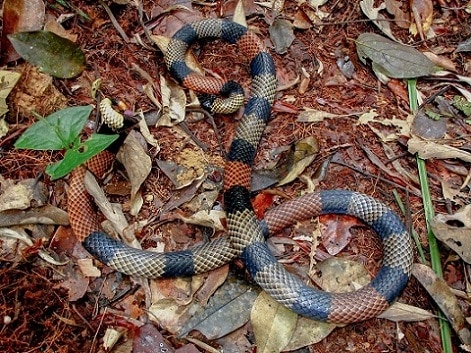
The Amazon coral snake lives across a huge swathe of central and northwestern Brazil, plus northern Bolivia, Suriname and many more. Thousands of miles lie between their western and easternmost points, yet on this iNaturalist map, they have a disproportionately low number of dots. That’s because Amazon coral snakes (Micrurus spixii) live only in their namesake forest. A surjoin to a grassy meadow is extremely rare; the best chance is an illegal logging village on the direct rainforest outskirts.
Amazon coral snakes live in deep, hard to find hollows of the Amazon, which require immense pathfinding skills to track down. They love closed canopy forests with high humidity and rainfall, stretching as far as the eye can see. Micrurus spixii has typical red-black-white coral snake colours, but even these have an extra layer of rainforest gooiness to them.
At up to 160cm, Amazon coral snakes are one of the Micrurus family’s largest, but this hasn’t increased their sightings. By contrast, the Central American coral snake (Micrurus nigrocinctus) regularly ventures to open fields and plantations, and is simpler to track down. Micrurus spixii has a neurotoxic, myotoxic venom capable of destroying muscle fibres and causing paralysis.
| 2 | Red-headed glasstail |
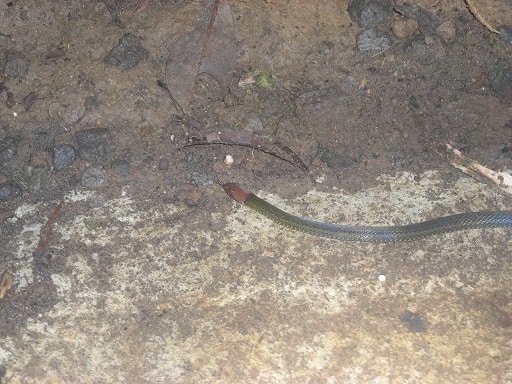
Hundreds of miles from TVs, electric lighting and a comfortable bed, the red-headed glasstail lives in another universe: tangled rainforest hollows covered with thousands of years of accumulating rainforest matter.
Red-headed glasstails range from Costa Rica, through most of Panama, to Colombia and Ecuador. Their range follows the line of forests, as where trees are hacked and slashed away, the glasstails will also vanish. Red-headed glasstails prefer the deep, ancient interiors of forests to all else. The richer the ecosystem, the more stashed away they are in a forbidding rainforest world, the happier they’ll be. Red-headed glasstails were named for their easily detachable tail, which they purposefully detach while in a bird’s clutches. They measure just 65cm, and are completely harmless to humans.
They prefer forest floors, and as you could guess, have a red head followed by a browner body. Their rainforest locations make them tricky to observe, and there has never been detailed research conducted on red-headed glasstails. For their diet, we have only surface level sightings of frogs and toads, and their hunting style is totally mysterious.
| 3 | Cambodian pitviper |
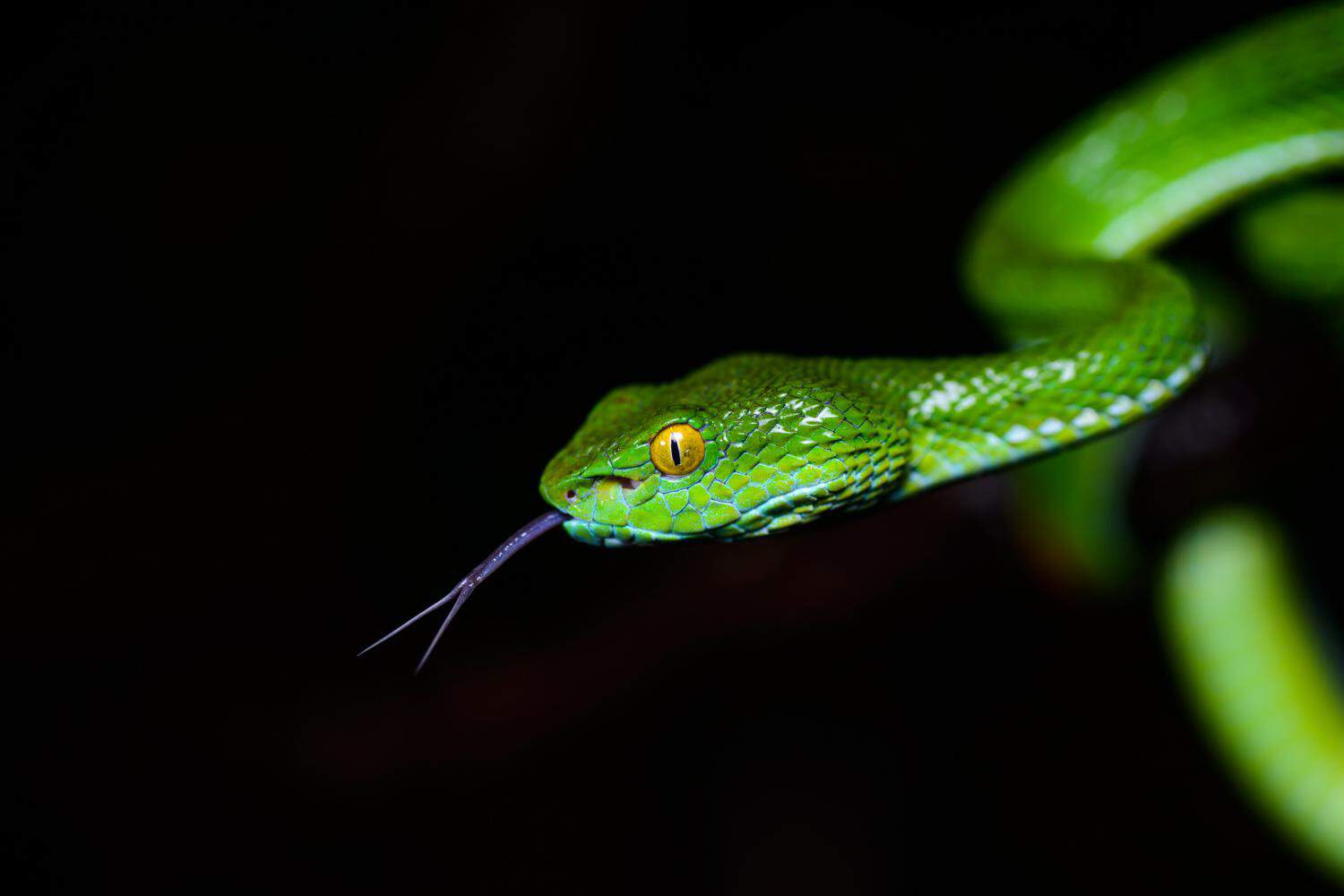
A venomous snake of deep Cambodian forests, which lives stashed away, which is probably best for our sake and the snake’s. Cambodian pitvipers were only discovered in 2011, and are particularly abundant in Botum Sakor National Park (Cambodia’s largest). They exclusively reside in southwest Cambodia, near deep forest streams, as they’re normally found within 10 metres of water.
Like other Trimeresurus members, they rest on branches 1-2 metres above ground, in highly alert ambush posture. But unlike the white-lipped pitviper, which lives in gardens and alleyways of Bangkok, Trimeresurus cardomensis never prowls urban areas. They live far from humanity, except maybe a mystical Buddhist sitting cross-legged in the jungle.
Cambodian pitvipers have no research on diet nor venom to their name, as they were discovered so recently. With a white-lipped pitviper, you can literally sit on a back garden chair and watch them target an Asian rice frog. With Trimeresurus cardomensis, you need a radiotransmitter, camera traps, and hundreds of hours of manpower. That said, their love of branches above streams, and a confirmed National Park where they reside, makes them slightly easier to find than other deep forest snakes.
| 4 | Panama dwarf boa |
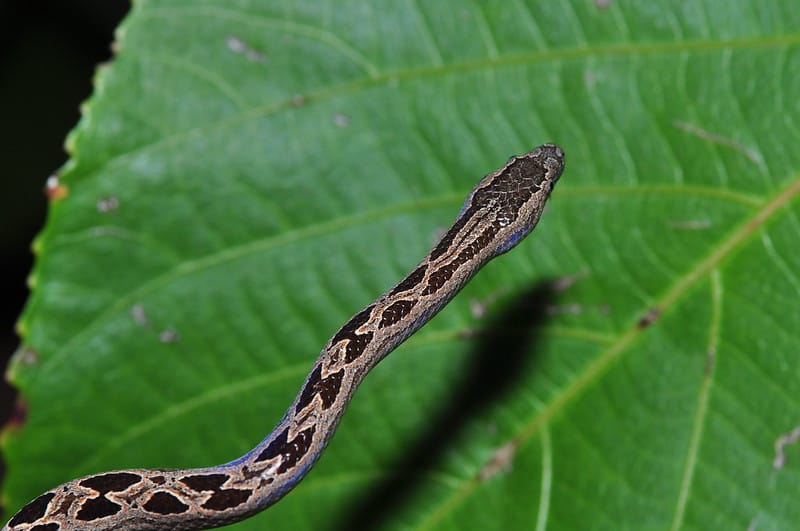
One of the shiest, most obscure boas on Earth. Unlike the fearless, adventurous boa constrictor, Panama dwarf boas live only in deep forests of Costa Rica and northwest Panama. Grasslands are a no go, as the species has evolved to stash itself in tree trunks. They lack flashy patterns, with consistent brown scales, and have typically vertical boa pupils.
Ungaliophis panamensis is rare even within its forest heartlands. A study in the Borre del Colorado Wildlife Refuge detected just 10 over eight years of monitoring. Panama dwarf boas stray to banana plantations occasionally, but they’re all about lowland rainforests and high altitude cloud forests, the more remote the better.
Photographing this snake is an epic task. First you have to battle your way into the heart of the rainforest, possibly leaving the established trail. Secondly, there’s no guarantee that they’ll show their face, preferring to hide in their dark hollow. You might be so distracted by the rainforest cacophony that you fail to notice this harmless but crafty snake. Like all boas, Panama dwarf boas are non-venomous, and aren’t famed for sharp fangs like the Amazon tree boa.
| 5 | Indochinese ground snake |
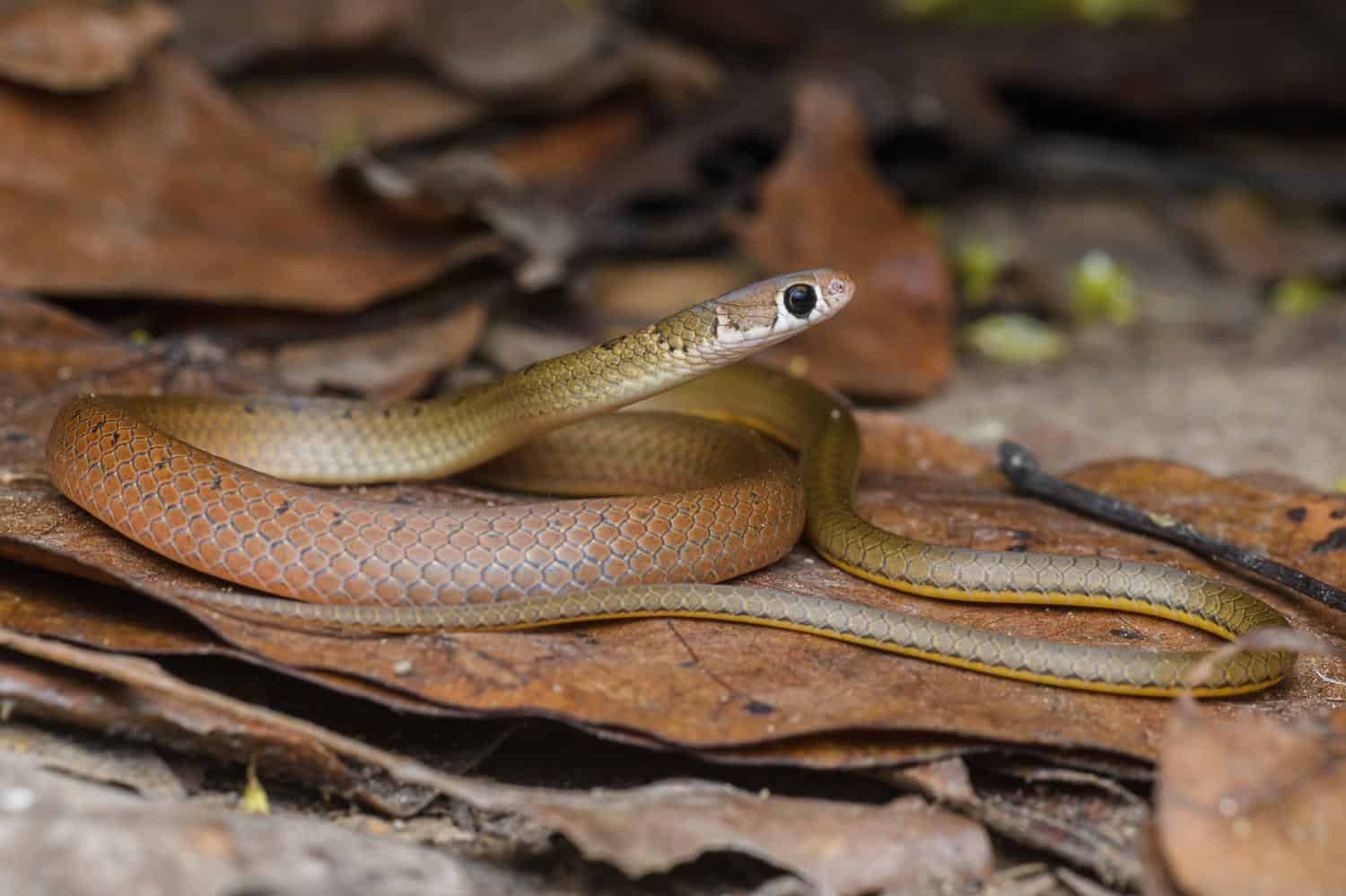
A harmless forest snake, except maybe by luring you into pitviper country in your impossible attempts to find it. Indochinese ground snakes live in western Thailand and adjacent Myanmar. They live miles from any city, in densely forested hills where Pope’s pitvipers and green catsnakes also hang out. The difference is that Gongylosoma scriptum hides in loose soil rather than resting proudly on branches.
Coupled with a love of deep, remote forests, only a few dozen Indochinese ground snakes have ever been found, with just a handful in museum collections. Our knowledge is restricted to the surface level: a 40cm length and consistent pale brown colour, apparently optimised for camouflage in loose soils. Gongylosoma scriptum has been observed slithering around by day, and has corresponding round pupils rather than vertical.
To find this snake, you’d have to spend weeks on the Thai/Myanmar border, not just walking down forest paths, but rummaging through soil on your hands and knees. They’ve been sighted by these foot trails occasionally, so at least you don’t have to go stumbling around dense untrodden undergrowth.
| 6 | Speckled forest pitviper |
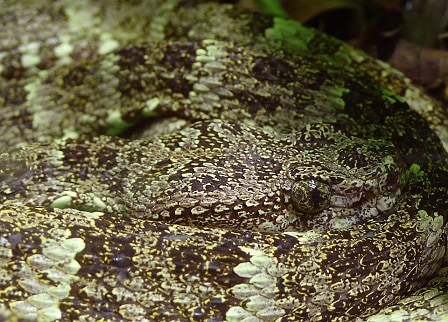
Part of the 40+ member Bothrops pitviper family. If you placed this species side by side with its cousin the crossed pitviper, you’d instantly be able to tell which inhabits forests and which inhabits grassland. Speckled forest pitvipers appear to have absorbed the essence of the rainforest, so that even their eyes are covered with a layer of moss and fungi.
This species inhabits most of the Amazonian region, particularly eastern Ecuador. They reach a maximum of 174.5cm, and their venom has never killed anyone on record. 2 bites resulted in severe cytotoxic swelling, 1 an amputation. Bothrops taeniatus virtually never appears in grassland or dry woodland, and occasionally in villages next to rainforests. They live in the untouched core of rainforests, which loggers have tried and failed to hack their way to, and would probably be devoured if they did.
Bothrops taeniatus clings to branches most of the day, like the Cambodian pitviper thousands of miles away. Instead of consistent green, they have endless complex jungle shades. This species is also found in Peru, Suriname, Guyana, and a huge swathe of Brazil.
| 7 | Puerto Rican boa |
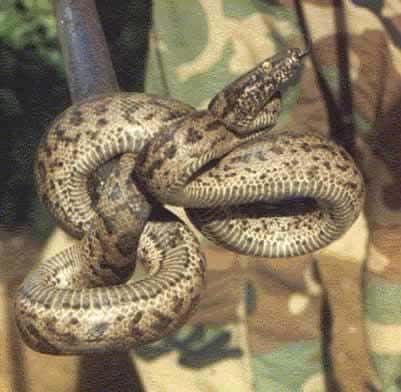
The dominant constrictor on their namesake island. While not as huge as the Cuban boa, Puerto Rican boas (Chilabothrus inornatus) measure 1.2-1.8 metres and have the power to slither up trees and pinch birds from their nests. Within Puerto Rico, this species is concentrated in the northern karst region, a zone of abundant limestone outcroppings mixed with high rainfall and dense forests. This is a misty place, and amid this mist you may spot a pair of vertical boa eyes, debating whether you’re a weird hutia species, and therefore edible.
Puerto Rican boas are steady slitherers and no real threat to humans, despite mammals being their main prey. They’re easy to find in these karst forests, as their bulky size reduces the need for camouflage. The Puerto Rican boa goes deeper still and hangs out in dark caves within these forests. There they hunt bats by fastening their tails to the cave roof and dangling down, blocking their flight path.
A moist, misty forest where your trail constantly passes dark cave mouths is the ultimate place to find the Puerto Rican boa. This species never appears in towns, occasionally in villages. Luckily, Puerto Rico’s forest cover has soared from 6% in the 1940s to over 50% in the 2010s, in a rare Caribbean success story. Chilabothrus inornatus has plenty of space to think its boa thoughts and commit its boa deeds.
| 8 | Toad-headed pitviper |
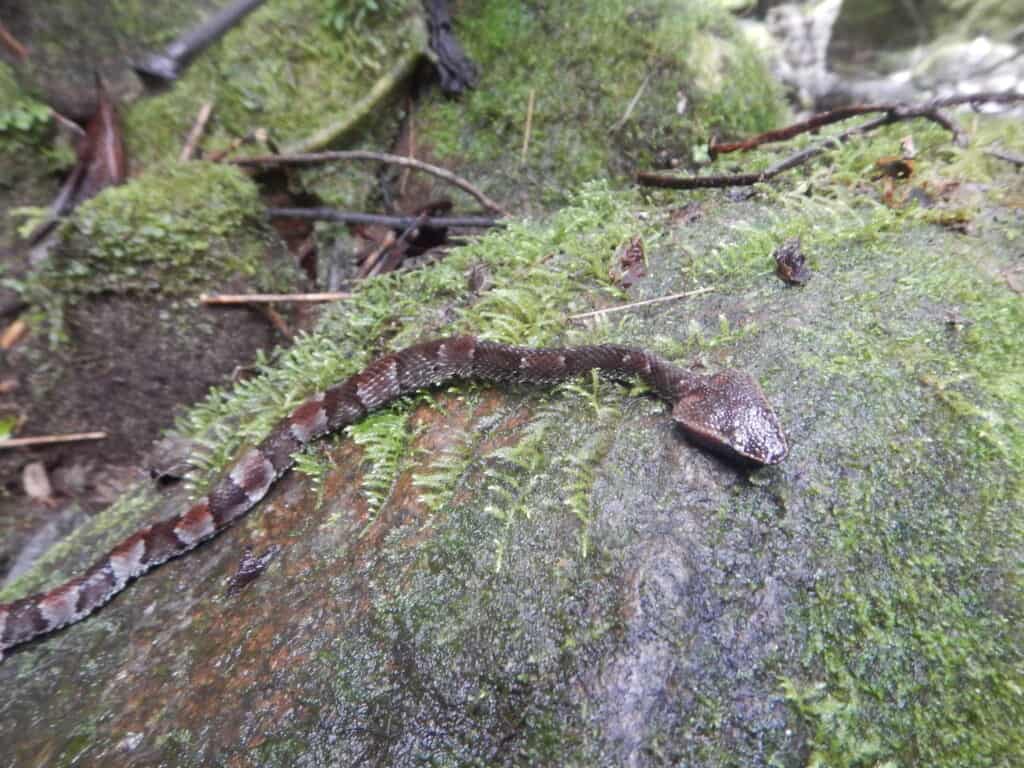
Only the truly faithful or truly unlucky will meet this venomous snake. Toad-headed pitvipers (Bothrocophias microphthalmus) live on eastern slopes of the Andes in Brazil, Ecuador and Peru. They measure 100cm and stick to dense, damp rainforests which are crawling with other life forms. Rather than Bothrops, this pitviper belongs to the smaller, 9 member Bothrocophias family. Villagers have stumbled into this snake on forest trails at night, but its venom is barely researched, a remote snake as it is.
Their scales look permanently glistening, whether through its natural appearance, or because they’re constantly drenched with rainfall. Toad-headed pitvipers blend effortlessly with leaves and mulch, as their bodies lack any neon, flashy colours. The best time to spot them is when slithering over damp rainforest boulders, and an instant ID sign is their sharply triangular head. Most pitvipers have a somewhat triangular head, but Bothrocophias microphthalmus reaches the next level.
This species has a wide diet, featuring mammals, frogs and lizards alike. They’re an ambush snake, grinding around a few square metres of forest, ambushing anyone who stumbles into their small slice of land, which they jealously protect.
| 9 | Black-banded keelback |
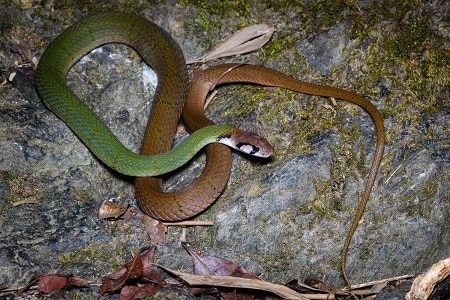
This deep forest snake is a complete enigma. Black-banded keelbacks measure 100cm and are spread out over most of Thailand (skipping the far south). Their cousin the red-necked keelback has plenty of research, yet with Rhabdophis nigrocinctus, we have zilch about their venom composition and precise dietary leanings. The latter is presumed to be frogs, as black-banded keelbacks appear by lush streams deep within forests.
You’ll only find Rhabdophis nigrocinctus in the deepest, most untouched areas, not ones heavily slashed down with one or two straggler trees still standing. They live in forest corners that would have looked identical 5000 years ago, with many mysterious secrets yet to find, with the black-banded keelback potentially being one of them.
The only concrete information we have on black-banded keelbacks is a nicely detailed photograph. This Thai species has the colours of a chewy, juicy speciality from the sweet shop. Its upper body is green while the lower 60% is red, with an extremely thin and whippy tail. The namesake bands are razor thin bars encircling the body. They have a paler chin and throat, and a series of black markings on their face.
| 10 | Guatemalan palm pitviper |
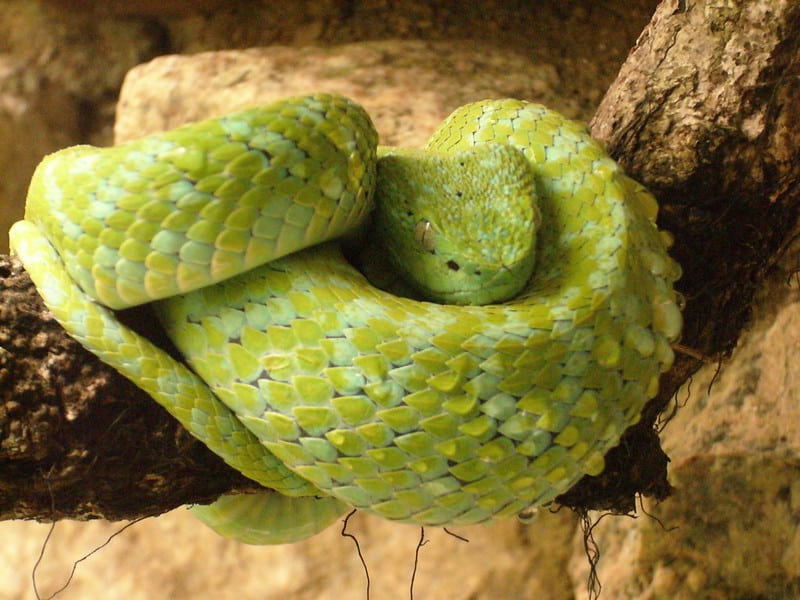
A very rare pitviper, found in a tiny slice of territory crossing the Mexican-Guatemalan border. Bothriechis bicolor lives almost exclusively in pristine forests with none of humanity’s fingerprints. They’re incapable of surviving in grassland, and if a few square miles are deforested, the populations inside will die.
Guatemalan palm pitvipers cling to branches in immobile ambush posture. Only tongue flecking and a determined glare reveals that they’re not sleeping. This is a mostly green snake with occasional blue tinges, optimised to blend in with forests. Because of their love of the deepest forests, potentially miles from the nearest village, and even further from the closest hospital, they’re rarely sighted except by explorers. They occasionally appear in plantations next to forests, but are no more adventurous than that.
This species overlaps in the Guatemalan mountains with Godman’s montane pitviper, but that species sticks to the ground, allowing the two to coexist without clashing (often).
